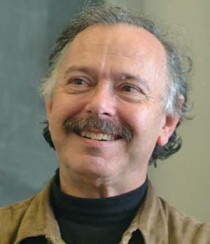By Joseph D’Aleo, CCM
In the LA Times, there was a story on Richard Muller’s invitation to DC to testify to congress about the Berkeley Project, which attempts to reconstruct global data

The Berkeley Earth Surface Temperature study is led by physicist Richard Muller, a longtime critic of the scientific consensus on climate change, who plans to testify on the effort Thursday before the House Science Committee in the latest of several congressional inquiries on climate science since the GOP majority was seated. Temperature data from tens of thousands of weather stations across the globe, many of which have incomplete records, are “very contentious,” Muller said in an interview. “The skeptics are raising legitimate concerns.”
Muller and many of those who question the temperature data are drawn to the “urban heat island” phenomenon, maintaining that gauges may be registering latent heat from asphalt, concrete and other urban features. Over time, some weather stations that once recorded temperatures in rural areas have been surrounded by cities and suburbs. The Berkeley project is analyzing information from 39,000 stations -five times as many as the other groups, Muller said - and will address the fact that temperature data have been recorded at varying times of day.
The project also will put its calculations on the Internet in a “transparent” way, Muller said. Other scientists, he said, “put homogenized data online. They don’t put up the [software] tools that get you from the raw data to the homogenized data. How do they pick the [weather station] sites? That involves human judgment.”
Peter Thorne, a leading expert on temperature data at the National Oceanic and Atmospheric Administration’s National Climatic Data Center in Asheville, N.C., said the three main data sets by the NOAA, NASA and Britain’s Hadley Centre adjust for the heat island effect, as well as for measurements at different times of day. Muller’s use of 39,000 weather stations, he said, “will make next to no difference” in the final result.
First of all the Berkeley Project’s approach to the data when stations move or siting changes - treating them like separate stations makes sense. Almost invariably the change in siting leads to a warm bias in trends.
Second and most importantly, Thorne must know that NOAA and Hadley don’t adjust for urbanization. In fact their homogenization approach urbanizes good rural station data sets. NOAA removed a UHI adjustment based on Karl (1988) in 2007 for the US 1221 station network (USHCN v2). NASA attempts an urban adjustment using night lights but McIntyre and others have shown the poor metadata (precise GIS locations) make matching satellite brightness and stations difficult.
In a story last year on Climate Science “Erroneous Statement By Peter A. Stott And Peter W. Thorne In Nature”, Roger Pielke Sr. wrote:
This is deliberately erroneous as one of the authors of this article (Peter Thorne) is an author of a CCSP report with a different conclusion. With just limited exceptions, the surface temperature data sets do not use different sources of data and are, therefore, not independent. As I have written, “The raw surface temperature data from which all of the different global surface temperature trend analyses are derived are essentially the same. The best estimate that has been reported is that 90–95% of the raw data in each of the analyses is the same (P. Jones, personal communication, 2003).”
Peter Stott and Peter Thorne have deliberately misled the readership of Nature in order to give the impression that three data analyses collaborate their analyzed trends, while in reality the three surface temperature data sets are closely related.
Muller meanwhile remains an enigma, like his partner in the project Judith Curry. He is an apparent semi-skeptic who believes AGW exists but is is greatly exaggerated .He and Judith and not thoroughly trusted by either side of the issue. This may mean they are getting it right. We can hope the project continues to be as promised independent and open source. NOAA, NASA, CRU are definitely not open source despite Thorne’s claims to the contrary. Their results are not currently replicable.




